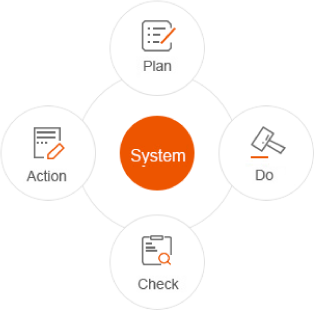Our Commitment:
Safety Always First
The health and safety of employees are always our first priority while running business. We have a rigorous safety culture of responsibility and accountability to make sure the achievement of "Zero Injury, Zero Accident and Zero Pollution" in all our workplaces. We also put efforts to protect the health and safety of our employees, sub-contractors, customers and operating areas.

We are committed to promote the harmonious coexistence of human, nature and growth.

We comply with laws and regulations, and enforce the strictest HSE standards.

We believe that all accidents are preventable.
